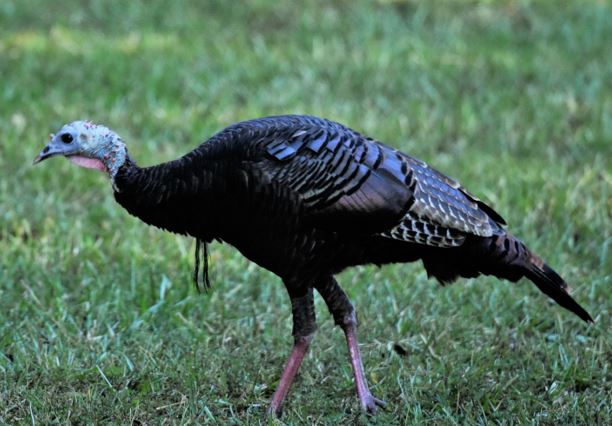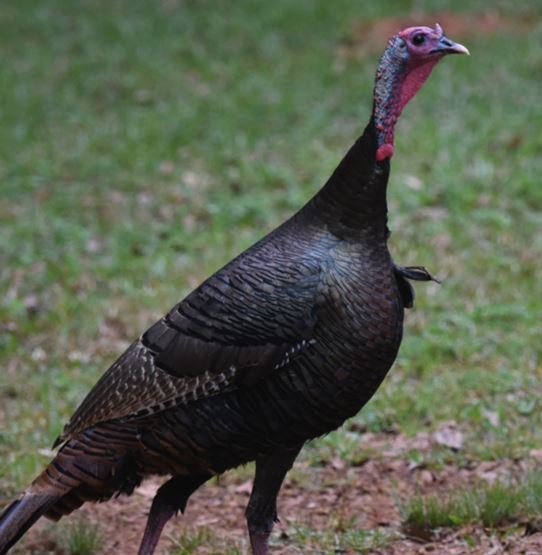Fall 2024
Article and photos by Susan Lindsley
Georgia law prohibits turkey hunters from killing hens. But the hen population visiting my yard decreases every summer. That is, the special group of hens, those sporting a beard.
I used to have four. But the last three years, the number decreased during turkey season. In 2022, only one came into the yard. She was gone during the 2023 turkey season.

The blue head identifies this bird as a hen, regardless of her beard.
How many poults might the missing hens have produced over the years? The flock of 40 that once roamed through my yard and the open cattle fields is also reduced. The most I have counted the past two years is 24. The food supply is unlimited for them, provided by 40 acres of fields with grasshoppers and other insects, and two automatic feeders that scatter about ten pounds of corn daily.
The only competition they have for the corn is the deer, which try to chase turkeys off, but the birds dance around the threats and manage to eat. The only threat is coyotes, or for the very young, the snakes and hawks.
Unfortunately, some hunters see a beard and immediately think “tom.” But a beard does not a tom make, just as antlers do not a buck make. Ever year someone kills an antlered doe. The antlers, however, are the criteria for determining the legality of a deer, and antlered does are considered legal. No way to check out the genitals of a deer strolling by.
Not often is a tom beardless, and not often is a hen bearded, but close observation can inform any hunter of a turkey’s sex. Although the hen resembles a jake in size, even the jake has a masculine head. The hen carries a blue head and lacks the rough waddle of the tom, and her beard is wispy. In the spring mating season, the tom’s head is red, as he thinks of hens and courtship and his beard is thicker, even when he is a jake. A hen may have a double beard, but again, these are daintier that a tom’s.

A legal Jake.
Every turkey hunter must take care when he pulls that shotgun to his shoulder. If in doubt, don’t shoot. Every hen is a treasure for our future generations, whether hunters or just folks who enjoy seeing or hearing the wild birds. May the gobblers call to you every spring.
A member of the Georgia Outdoor Writers Association, Susan Lindsley of Decatur has authored numerous books about deer and wildlife, as well as novels, short fiction and nonfiction. For more details visit her website. She can be reached at yesterplace@earthlink.net.